Did King Philip II of Ancient Macedonia Suffer a Zygomatico-Orbital Fracture? A Maxillofacial Surgeon's Approach
Abstract
:Materials and Methods
Results
Historical Evidence
Discussion
Conclusions
References
- Andronikos, M. Philip King of Macedon; Ekdotike Athenon: Athens, 1992. [Google Scholar]
- Kanellopoulos, P. The Personality of Alexander the Great. Christopoulos J. History of Hellenic Nation. 4; Ekdotike Athenon: Athens, 1973; pp. 10–25. [Google Scholar]
- Heinemann, W. (Ed.) Demosthenes, Vol 2; The Loeb Classical Library: Cambridge, 1953; pp. 58–61. [Google Scholar]
- Lascaratos, J. Alexander the Great in the Fields of Medicine; J and J Hellas: Athens, 1997; pp. 54–106. [Google Scholar]
- Musgrave, J.H.; Neave, R.A.; Prag, A.J. The skull from tomb II at Vergina: King Philip II of Macedon. J Hell Stud 1984, 104, 60–78. [Google Scholar] [CrossRef] [PubMed]
- Heinemann, W. (Ed.) Pliny Natural History, Vol 2; The Loeb Classical Library: Cambridge, 1969; pp. 588–589. [Google Scholar]
- Riginos, A.S. The wounding of Philip II of Macedon: Fact and fabrication. J Hell Stud 1994, 114, 103–119. [Google Scholar] [CrossRef] [PubMed]
- Heinemann, W. (Ed.) The Geography of Strabo, Vol 3; The Loeb Classical Library: Cambridge, 1954; pp. 344–345. [Google Scholar]
- Heinemann, W. (Ed.) The Geography of Strabo, Vol 4; The Loeb Classical Library: Cambridge, 1961; pp. 176–177. [Google Scholar]
- Heinemann, W. (Ed.) Diodorus of Sicily, Vol 7; The Loeb Classical Library: Cambridge, 1971; pp. 332–333. [Google Scholar]
- Heinemann, W. (Ed.) Plutarch’s Moralia, Vol 4; The Loeb Classical Library: Cambridge, 1962; pp. 278–281. [Google Scholar]
- Heinemann, W. (Ed.) Lucian, Vol 6; The Loeb Classical Library: Cambridge, 1959; pp. 52–53. [Google Scholar]
- Andronikos, M. Vergina. The Royal Tombs; Ekdotike Athenon: Athens, 1993; pp. 117–175. [Google Scholar]
- Prag, A.J. Reconstructing King Philip II: The “nice” version. Am J Archaeol 1990, 94, 237–247. [Google Scholar] [CrossRef]
- Prag, A.J. Reconstructing the skull of Philip of Macedon. Danien, E.C. The World of Philip and Alexander; The University Museum of Archaeology and Anthropology: Philadelphia, PA, USA, 1990; pp. 17–37. [Google Scholar]
- Hartle Wyman, R. The search for Alexander’s Portrait. Lindsay Adams W, Borza EN. Philip II, Alexander the Great and the Macedonian Heritage; University Press of America: New York, USA, 1982; pp. 153–176. [Google Scholar]
- Holton, D. The Tale of Alexander. The Rhymed Version; Byzantine and Neohellenic Library: Salonica, 1974; pp. 37–40. [Google Scholar]
- Lascaratos, J.; Lascaratos, G.; Kalantzis, G. The ophthalmic wound of Philip II of Macedonia (360-336 BCE). Surv Ophthalmol 2004, 49, 256–261. [Google Scholar] [CrossRef] [PubMed]
- Bartsiokas, A. The eye injury of King Philip II and the skeletal evidence from the royal tomb II at Vergina. Science 2000, 288, 511–514. [Google Scholar] [CrossRef] [PubMed]
- Xirotiris, N.I.; Langenscheidt, F. The cremations from the Royal Macedonian tombs of Vergina. Achaeological Newspaper 1983, 1981, 142–160. [Google Scholar]
- Lane Fox, R. Introduction. In Brill’s Companion to Ancient Macedon; 2011; pp. 21–22. [Google Scholar]
- Musgrave, J.; Prag, W.; Neave, R.; Fox, R.; White, H. The occupants of Tomb II at Vergina: Why Arrhidaios and Eurydice must be excluded. Int J Med Sci 2010, 7, s1–s15. [Google Scholar]
- Fiedler, S.; Graw, M. Decomposition of buried corpses, with special reference to the formation of adipocere. Naturwissenschaften 2003, 90, 291–300. [Google Scholar] [CrossRef] [PubMed]
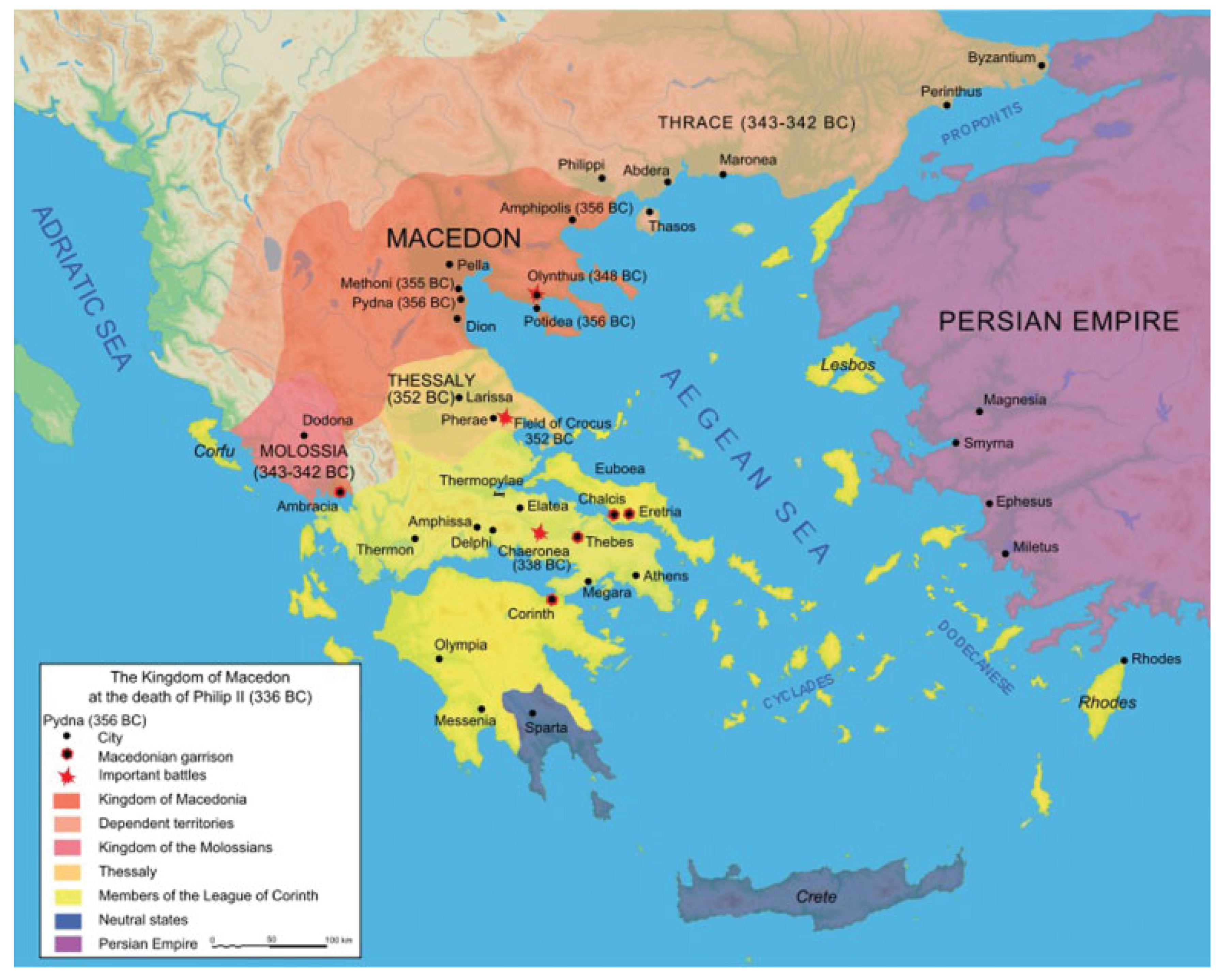
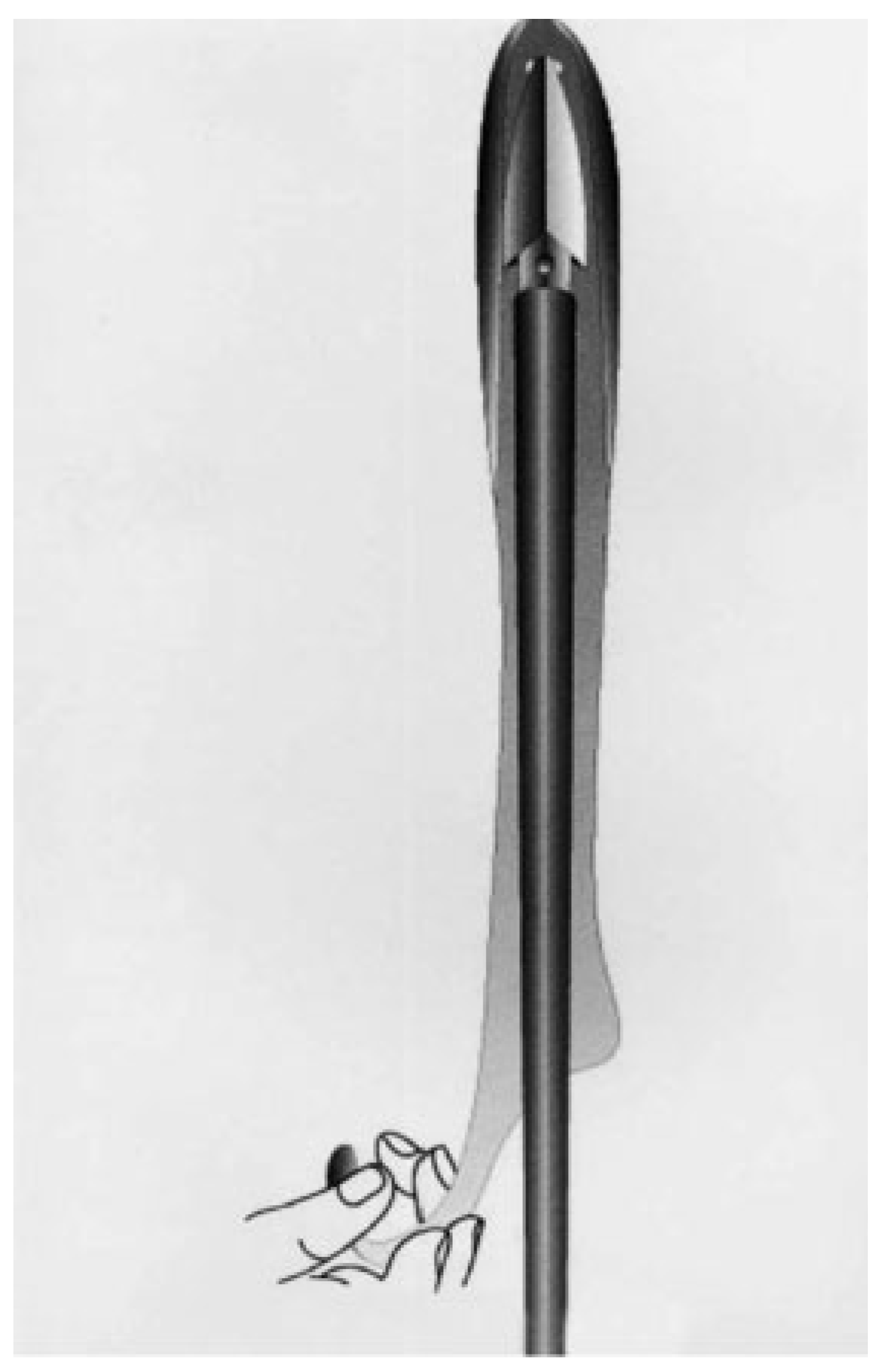
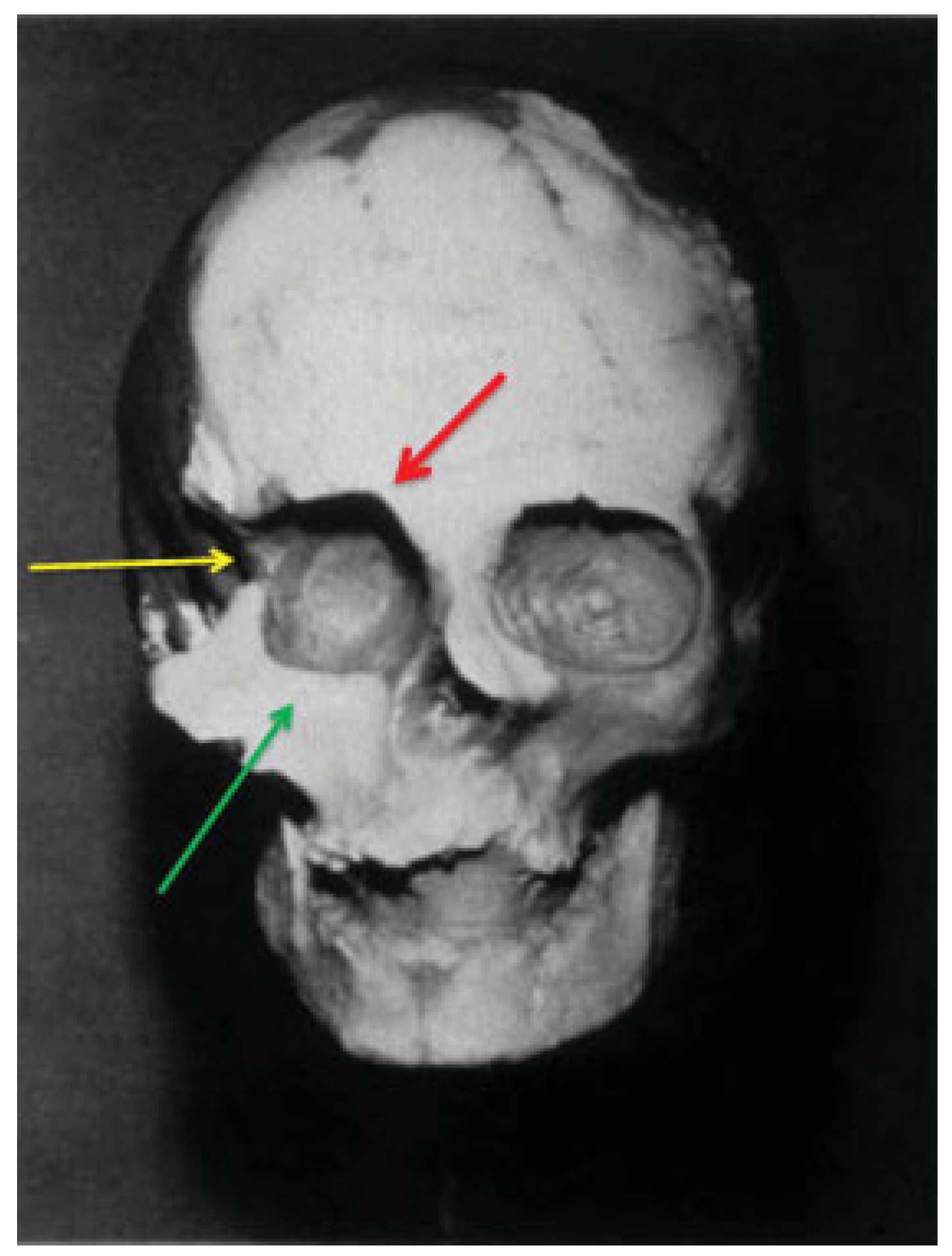
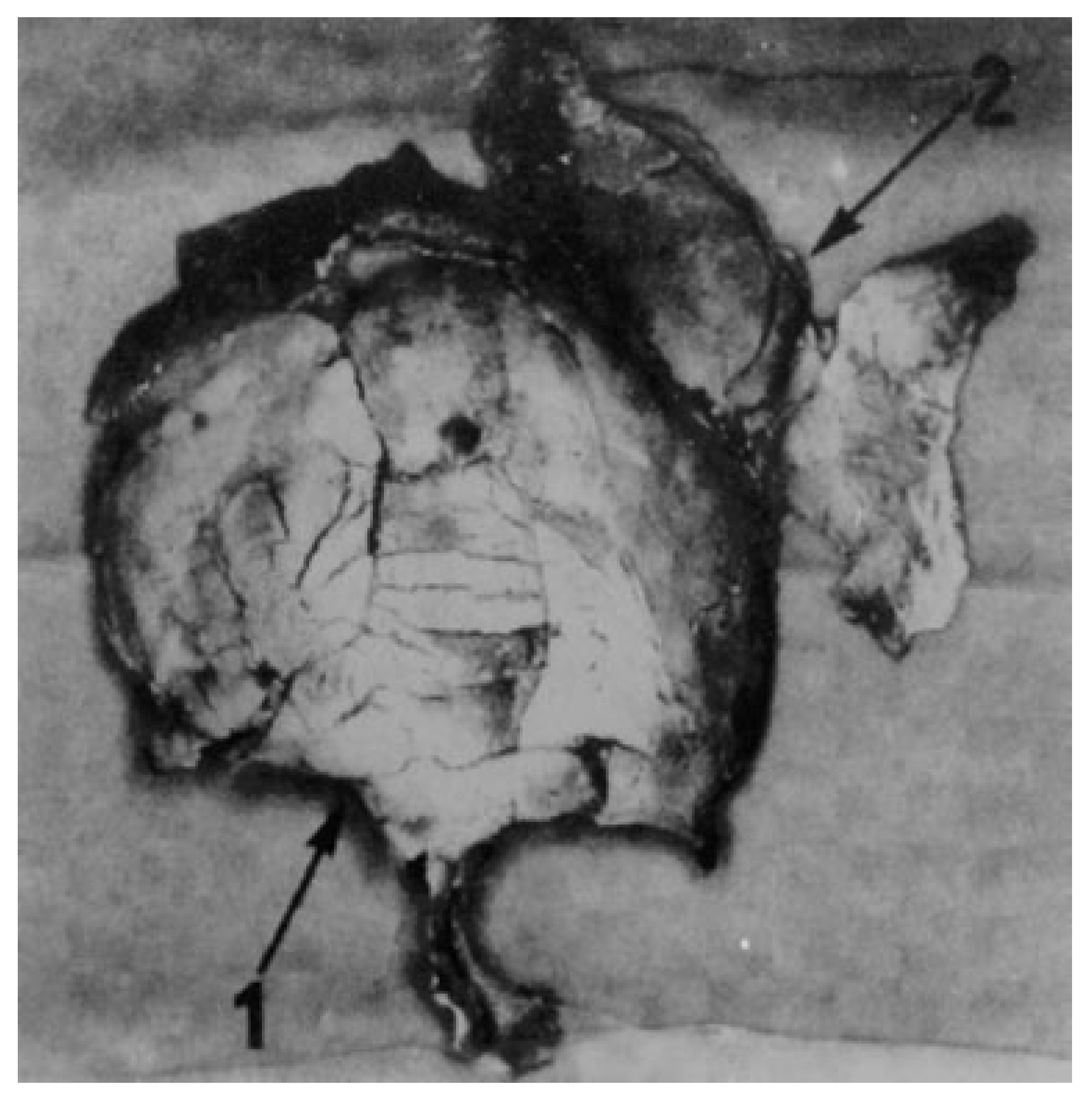


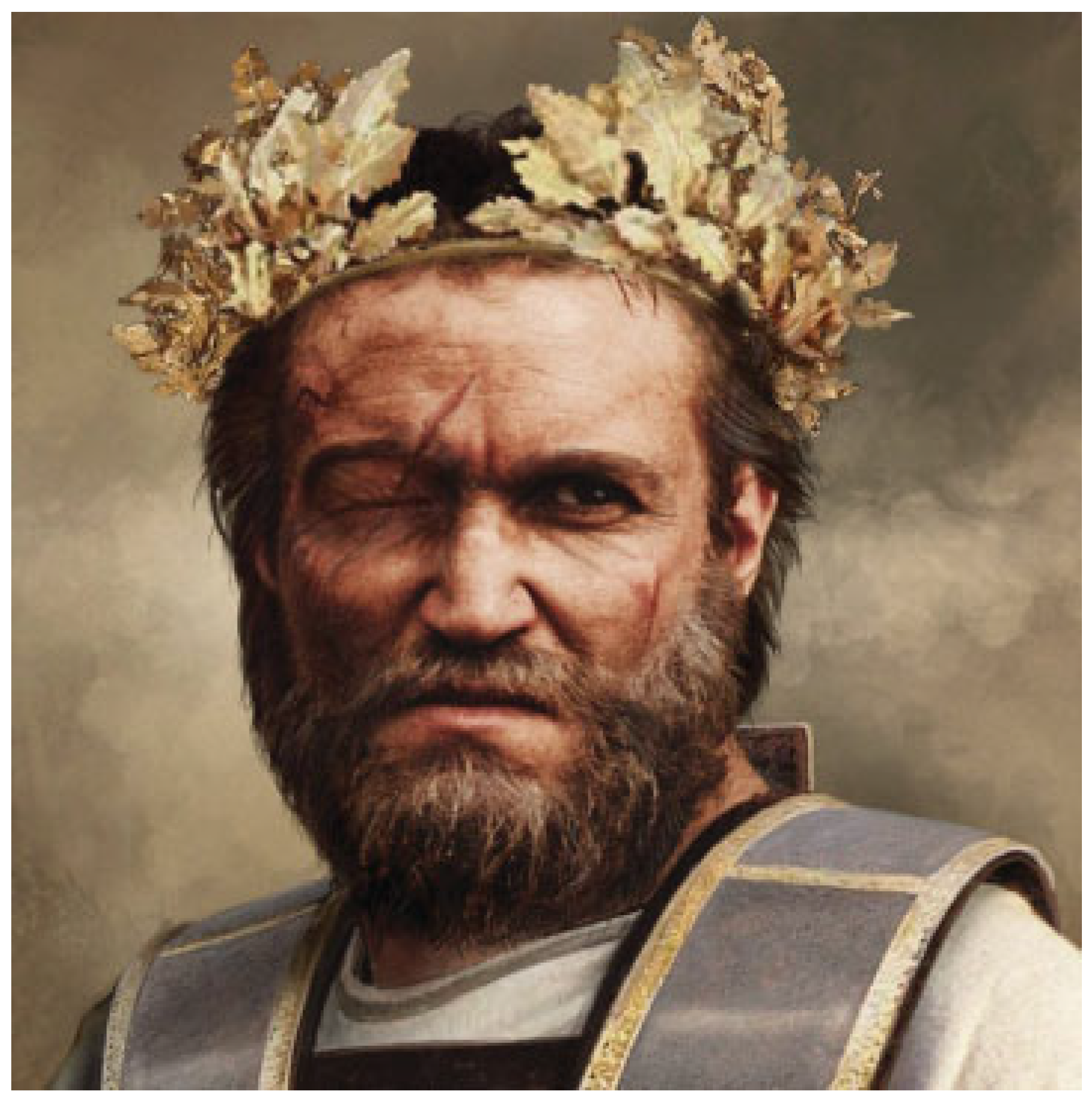
© 2017 by the author. The Author(s) 2017.
Share and Cite
Stathopoulos, P. Did King Philip II of Ancient Macedonia Suffer a Zygomatico-Orbital Fracture? A Maxillofacial Surgeon's Approach. Craniomaxillofac. Trauma Reconstr. 2017, 10, 183-187. https://doi.org/10.1055/s-0037-1601431
Stathopoulos P. Did King Philip II of Ancient Macedonia Suffer a Zygomatico-Orbital Fracture? A Maxillofacial Surgeon's Approach. Craniomaxillofacial Trauma & Reconstruction. 2017; 10(3):183-187. https://doi.org/10.1055/s-0037-1601431
Chicago/Turabian StyleStathopoulos, Panagiotis. 2017. "Did King Philip II of Ancient Macedonia Suffer a Zygomatico-Orbital Fracture? A Maxillofacial Surgeon's Approach" Craniomaxillofacial Trauma & Reconstruction 10, no. 3: 183-187. https://doi.org/10.1055/s-0037-1601431
APA StyleStathopoulos, P. (2017). Did King Philip II of Ancient Macedonia Suffer a Zygomatico-Orbital Fracture? A Maxillofacial Surgeon's Approach. Craniomaxillofacial Trauma & Reconstruction, 10(3), 183-187. https://doi.org/10.1055/s-0037-1601431


